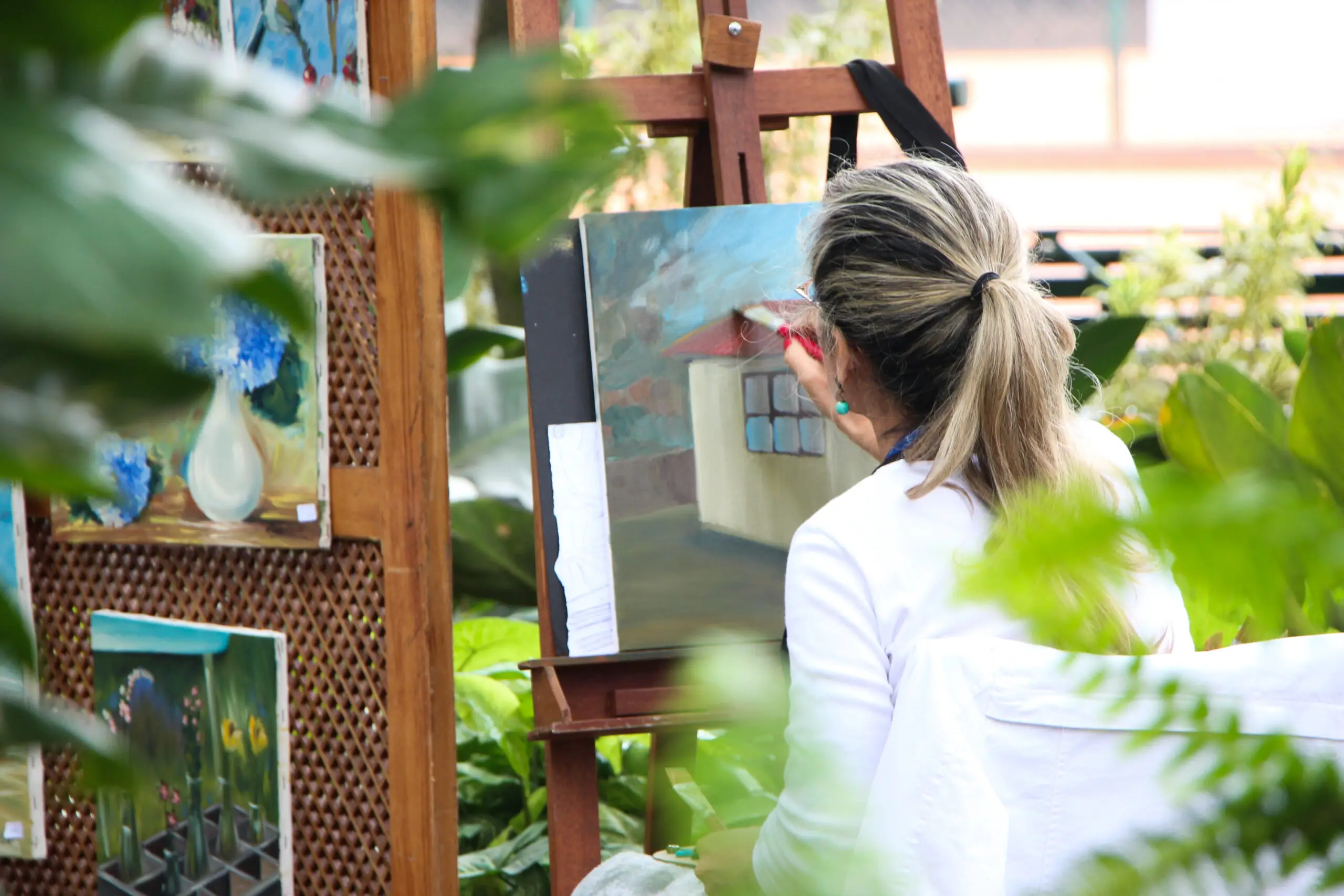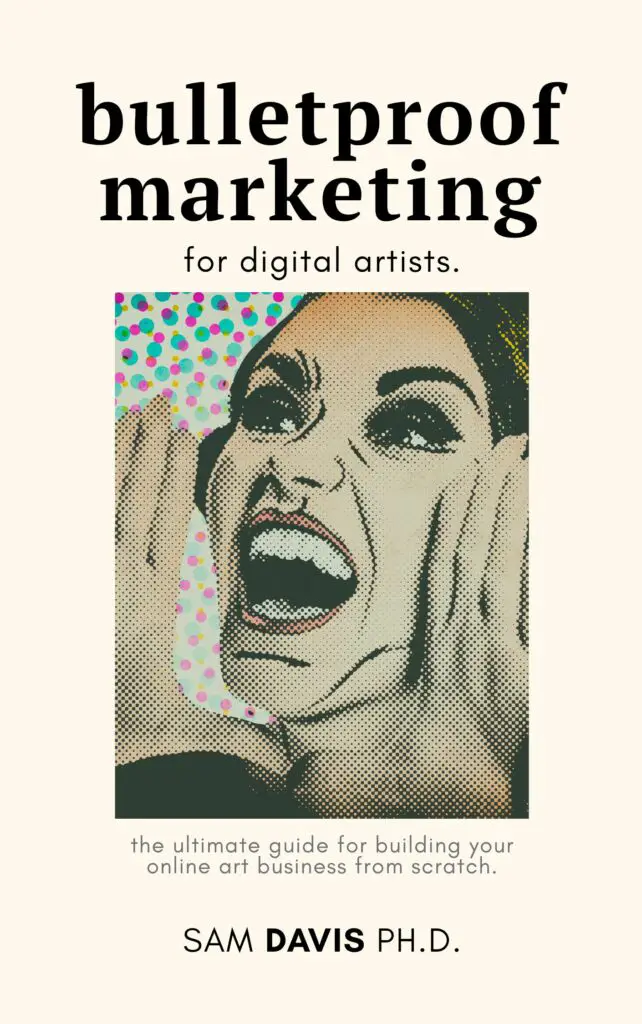As artists, the act of painting holds various meanings and motivations. Some painters find solace and joy in the process of creating art purely for their own enjoyment, while others pursue painting as a means to make a living. Understanding the differences between painting for fun and painting for money is crucial in navigating the artistic journey and finding fulfillment in your artistic pursuits.
In this blog post, we will explore the distinctions between these two approaches to painting and highlight the importance of understanding them. By gaining insights into the unique aspects of each approach, you can make informed decisions about your artistic path and strive for a harmonious balance between passion and sustainability.
Let's delve into the fascinating world of painting for fun versus painting for money, and discover how these differing perspectives can shape your artistic journey.

Painting for Fun: Definition and Characteristics
Painting for fun refers to the act of engaging in the artistic process purely for personal enjoyment and self-expression, rather than for professional or commercial purposes. It is a form of creative expression that allows individuals to explore their imagination, experiment with various techniques, and create art without the pressure of meeting external expectations.
The main characteristics of painting for fun include:
- Freedom of Expression: Painting for fun offers the freedom to express oneself without limitations or restrictions. Artists can explore their inner thoughts, emotions, and ideas through their artwork, allowing for a sense of liberation and personal fulfillment.
- Playfulness and Experimentation: Painting for fun encourages a playful and experimental approach to art. Artists can try new techniques, mix colors, and explore different styles without the fear of making mistakes. This mindset promotes creativity and discovery, leading to unique and imaginative artworks.
- Relaxation and Stress Relief: Engaging in painting for fun can be a therapeutic and relaxing activity. It provides an opportunity to escape from daily stressors and immerse oneself in the creative process. The act of painting can promote mindfulness, reduce anxiety, and provide a sense of calm and tranquility.
- Personal Enjoyment: Above all, painting for fun is about enjoying the process itself. Artists engage in this activity simply because they find joy and fulfillment in creating art. It is a means of self-expression, self-discovery, and personal growth, allowing individuals to tap into their innate creativity and find happiness in their artistic endeavors.
Whether you are a novice or an experienced artist, painting for fun offers a space for personal exploration, creativity, and enjoyment. It is a reminder that art does not always have to be serious or goal-oriented but can instead be a source of pure pleasure and self-expression.
Benefits and Personal Fulfillment
Painting for fun offers a multitude of benefits that go beyond the canvas. The inherent joy, creativity, and personal satisfaction derived from painting can have a positive impact on overall well-being. When painting for fun, artists have the freedom to fully express themselves and explore their creativity without any constraints. This approach allows for experimentation with different techniques, styles, and subjects, fostering a sense of artistic growth and discovery. It provides a therapeutic outlet for emotions and serves as a form of self-expression.
Research has shown that engaging in artistic activities like painting can improve brain health, stimulate the creative mind, and relieve mental strain. Painting can enhance emotional intelligence, boost memory, and sharpen fine motor skills. It cultivates imagination, allowing artists to tap into their innermost thoughts and feelings, resulting in a deeper sense of self-awareness.
Challenges and Limitations
While painting for fun brings immense personal fulfillment, it may come with its own set of challenges and limitations. One of the primary challenges is the potential lack of external validation or recognition. Artists who focus solely on painting for enjoyment may not receive the same level of recognition or praise as those painting for commercial success. This can sometimes lead to feelings of doubt or discouragement.
Another limitation of painting for fun is the potential absence of financial rewards. Unlike professional artists who sell their artwork or take commissions, those who paint solely for personal enjoyment may not receive monetary compensation. This can sometimes create a financial strain if art supplies and materials are costly.
Despite these challenges, many artists find immense value in painting for fun, prioritizing the personal satisfaction and creative growth that it offers. It allows them to maintain the purity of their artistic expression and nurture their passion for painting without the pressures of profitability or external expectations.
Painting for Money: Definition and Motivations
In the world of art, painting for money refers to the deliberate pursuit of financial gain through the creation and sale of artwork. While artistic expression remains at the core, the primary motivation behind this approach is to generate income and sustain a livelihood as an artist.
B. Professional Growth and Skills Development
One significant advantage of painting for money is the opportunity for artists to experience substantial professional growth and skills development. The necessity of meeting client expectations and delivering commissioned work often pushes artists to refine their techniques, expand their creative repertoire, and develop a more focused and disciplined mindset. Through the pursuit of paid projects, artists are encouraged to push their boundaries, explore new styles, and continuously improve their craft.
Moreover, painting for money opens doors to various opportunities for growth. Artists can leverage commissioned work, art sales, or even teaching art to generate income while honing their skills. By taking on commissioned projects, artists gain valuable experience in catering to specific client requirements and preferences, further enhancing their ability to adapt and meet the demands of a diverse audience. Additionally, selling original artworks or prints provides artists with exposure, recognition, and the chance to build a loyal customer base.
C. Business Considerations and Practicalities
When painting for money, artists must consider certain business aspects that go beyond the realm of creativity. Pricing artwork appropriately becomes crucial in order to ensure fair compensation for talent, time, and resources invested. Establishing pricing strategies that reflect the value of the artwork, market demand, and the artist's reputation can lead to a sustainable income stream.
Marketing strategies also play a vital role in the success of painting for money. Artists need to create awareness, promote their work through various channels, and cultivate a strong online presence. Building a brand and engaging with potential buyers helps artists reach a wider audience, attract new clients, and increase sales opportunities.
However, turning art into a business can come with its own set of challenges and pressures. Artists may face the need to balance creative freedom with client expectations, deadlines, and market trends. Additionally, the pressure to consistently produce sellable art and meet financial goals can sometimes lead to artistic compromises. It is essential for artists to find a balance that preserves their artistic integrity while also meeting the demands of a business-oriented approach.
By understanding the motivations, embracing professional growth opportunities, and navigating the intricacies of the art business, artists can embark on a path that allows them to pursue their passion while achieving financial success. In the next section, we will delve into the delicate balance between painting for fun and painting for money, exploring scenarios where both aspects can coexist harmoniously.
Balancing Fun and Money
In the world of art, the choice between painting for fun and painting for money can often feel like a dilemma. However, it is possible to find a balance that allows artists to pursue creative fulfillment while also generating income. Let's explore the intersection of joy and profitability in the realm of painting.
The Intersection of Joy and Profitability
Finding a balance between painting for fun and painting for money requires a careful understanding of personal goals and motivations. Artists can explore scenarios where their passion and creativity align with financial success. For example, creating artwork that resonates with both the artist and potential buyers can lead to a fulfilling and profitable artistic journey.
By identifying niche markets or exploring commissioned work, artists can tap into their artistic strengths while still catering to the demands of the market. Embracing innovation and experimenting with different styles or mediums can also open doors to new opportunities for both artistic expression and financial gain.
Navigating Personal Boundaries and Artistic Integrity
While financial success is important, it should not come at the expense of artistic integrity. Maintaining personal boundaries and staying true to one's artistic vision is crucial when pursuing financial success. Artists must be mindful of aligning their work with their values and principles.
Setting clear boundaries ensures that artists don't compromise their artistic voice or authenticity in pursuit of monetary gains. By striking a balance between commercial viability and personal artistic expression, artists can navigate the fine line between making money and staying true to their craft.
Case Studies and Artists' Perspectives
To gain a deeper understanding of how artists successfully balance both fun and money in their painting careers, let's dive into some inspiring case studies and hear directly from artists themselves.
- Case Study 1: Jane Adams – Jane is a renowned painter who has managed to maintain her artistic freedom while building a successful career. She believes that by staying true to herself and creating art that resonates with her, she attracts the right audience and opportunities.
- Case Study 2: Michael Chen – Michael is a photographer who specializes in commissioned portraits. He has found a way to blend his love for portraiture with the demands of his clients, allowing him to generate income while still enjoying the creative process.
By exploring these case studies and hearing artists' perspectives, we can gain valuable insights into how to strike a balance between fun and money in the world of painting.
In conclusion, finding a balance between painting for fun and painting for money is a personal journey that requires self-reflection, understanding of market dynamics, and a commitment to maintaining artistic integrity. By embracing the intersection of joy and profitability, setting personal boundaries, and drawing inspiration from successful artists, you can navigate the path to painting success that aligns with your aspirations and passions.
Conclusion
In this blog post, we have explored the intriguing dilemma of painting for fun versus painting for money. We discussed the differences between these two approaches and highlighted the importance of understanding them.
We learned that painting for fun is driven by passion, self-expression, and personal fulfillment. It allows artists to explore their creativity without the constraints of commercial demands. On the other hand, painting for money involves considering market trends, customer preferences, and financial viability. It requires artists to strike a balance between artistic integrity and commercial success.
Understanding the differences between these two approaches is crucial because it helps painters align their goals, values, and motivations with their chosen path. By recognizing whether they prioritize personal enjoyment or financial gain, artists can make informed decisions that lead to greater satisfaction and fulfillment in their artistic journeys.
It is important to remember that there is no right or wrong approach to painting. Each artist has their own unique path to success. Some may find fulfillment in creating art solely for pleasure, while others may thrive by turning their passion into a profitable business. The key is to stay true to oneself and make choices that align with personal aspirations and values.
So, whether you choose to paint for fun or for money, embrace your creativity, follow your heart, and find joy in the process. Let your artistic journey be guided by your own unique vision and motivations. Paint your way to success and fulfillment, however you define it.
Keep exploring, keep learning, and keep creating masterpieces that reflect your innermost desires. Happy painting!
